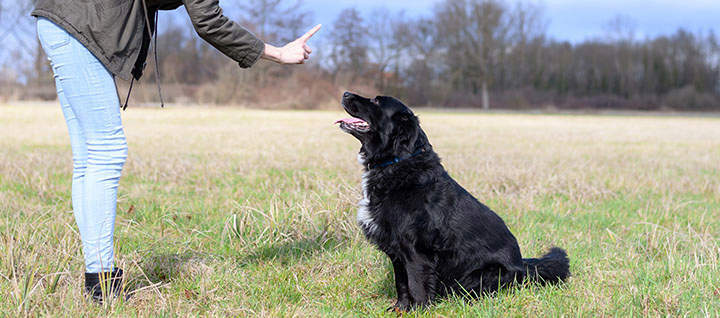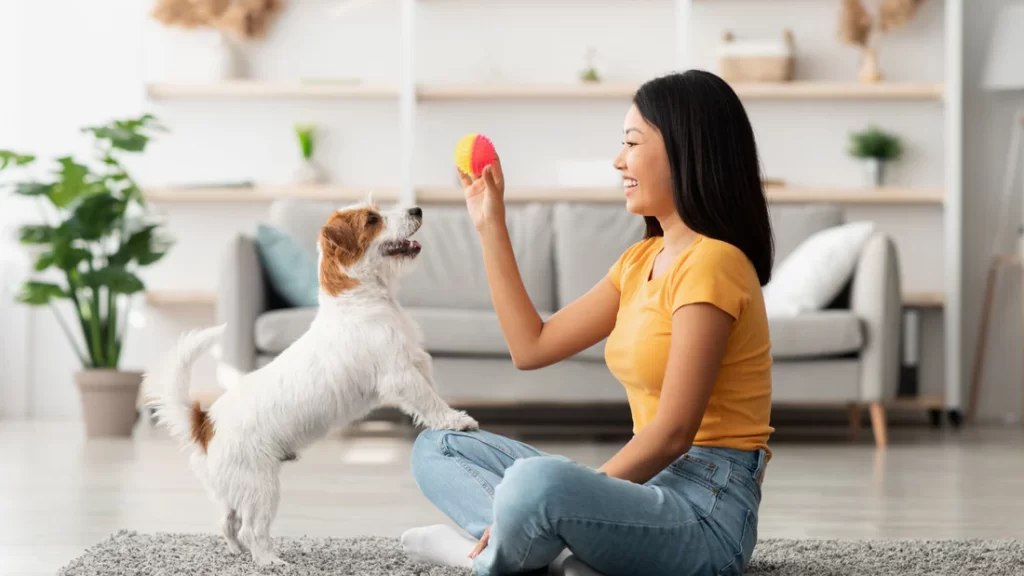Training your dog is one of the most rewarding aspects of pet ownership, helping to shape your dog’s behavior while strengthening the bond you share. A well-trained dog is not only easier to manage, but they are also happier and more confident. Whether you’ve just welcomed a new puppy or are working with an older dog, training is essential for developing obedience and trust. In this article, we’ll explore effective strategies for basic dog training at home, guiding you through everything you need to know to get started.
Understanding the Basics of Dog Training
Before jumping into specific commands and techniques, it’s important to understand why dog training is essential. Training goes beyond teaching tricks; it fosters mental stimulation and provides structure, which is crucial for a dog’s overall well-being. Without consistent training, dogs can develop behavioral issues that make them difficult to handle. Additionally, well-trained dogs are safer, especially when it comes to navigating everyday environments like busy streets or dog parks.
Your mindset as a trainer plays a significant role in your dog’s success. Training requires patience, consistency, and a positive attitude. Dogs, like people, don’t learn everything overnight, and some may take longer than others to master basic commands. Positive reinforcement—rewarding desired behaviors—is key to encouraging your dog to learn without feeling stressed or overwhelmed. Timing also matters. Short, focused training sessions in a distraction-free environment are far more effective than long, drawn-out ones. Training is as much about building trust as it is about teaching skills.
Essential Commands for Basic Training
The foundation of basic training lies in a few simple yet essential commands that every dog should learn. “Sit,” for example, is often the first command taught, as it is not only easy for most dogs to grasp but also incredibly useful in everyday situations. A well-executed “sit” helps dogs remain calm in potentially chaotic situations, such as when guests arrive or during mealtimes. To teach your dog to sit, start by holding a treat close to their nose, then slowly move it upwards. As their head follows the treat, their bottom will naturally lower to the ground. Once they sit, reward them immediately with praise and the treat. Repetition is key, and soon, your dog will sit on command.

Next is the “stay” command, which is equally important for your dog’s safety and behavior. Whether it’s keeping your dog from running into traffic or staying in place during a vet visit, the “stay” command teaches impulse control. Start by commanding your dog to sit, then, with a flat palm facing them, say “stay” while stepping back. If they remain in place, reward them. Gradually increase the distance and duration, but be patient—this command takes time to master, especially with distractions present.
Another vital command is “come.” Reliable recall can save your dog’s life if they ever escape your yard or get off-leash in a dangerous situation. Begin practicing in a controlled environment, like indoors or in your fenced yard. Call your dog’s name followed by “come” in a happy, upbeat tone, and reward them generously when they obey. One mistake to avoid is punishing your dog after they come to you, as this can make them reluctant to respond next time. Always make “come” a positive experience.
The “down” command is also useful, particularly when you need your dog to relax or settle in a calm, controlled position. Start by commanding your dog to sit, then take a treat and lower it slowly to the ground between their paws. As your dog follows the treat, their body will naturally move into a lying-down position. Once they’re down, reward them immediately. This command is great for reinforcing calm behavior, especially in high-energy dogs.
Positive Reinforcement: The Key to Success
Positive reinforcement is at the heart of effective dog training. By rewarding good behavior with treats, praise, or even playtime, you motivate your dog to repeat those actions. Dogs respond best to rewards, and this method encourages them to associate training with fun and positivity. The type of reward you choose is important—some dogs respond better to treats, while others might be more motivated by affection or their favorite toy.
The timing of rewards is crucial. Dogs need to understand exactly which behavior is being rewarded, so be sure to offer praise or a treat immediately after they perform the desired action. Consistency in this approach ensures your dog makes the connection between their actions and the positive outcome. Furthermore, it’s important that everyone in your household uses the same commands and reward system. Inconsistency can confuse your dog, slowing down their progress.
Addressing Common Behavioral Issues During Training
Despite your best efforts, you may encounter challenges during training. Distractions are one of the biggest obstacles, especially when you first start working with your dog. Initially, try training in a quiet space without external stimuli. As your dog becomes more skilled, gradually introduce distractions, such as training outdoors or with other people nearby. This will help them learn to focus on you even in busy environments.

Some dogs may become resistant or lose focus during training sessions. If your dog seems uninterested or overwhelmed, it’s important not to force the session. Instead, take a break and resume training when your dog is calm and receptive. Short, engaging sessions are always more productive than longer ones that can cause frustration. Similarly, if your dog has a habit of nipping or biting, especially during play, use commands like “leave it” or “no” to discourage the behavior. Redirection with a toy can help focus their energy on acceptable outlets.
Socializing Your Dog as Part of Training
Training doesn’t stop with commands—socialization is a critical part of raising a well-behaved dog. Proper socialization helps your dog feel comfortable in different environments, around people, and other animals. Without it, dogs may become fearful or aggressive in unfamiliar situations. Start by introducing your dog to new experiences in a controlled, positive way. For instance, take your dog on walks in different neighborhoods or allow them to meet calm, friendly dogs. Praise them for good behavior during these experiences to build confidence.
Gradual exposure to new people, sounds, and places will help your dog become a well-adjusted, friendly companion. Socialization is especially important for puppies, but even adult dogs can benefit from continued exposure to new environments. With each new experience, your dog will learn that the world is a safe and enjoyable place, reducing fear and anxiety in the long run.
Using Tools and Equipment in Training
Having the right tools can enhance your training efforts. A good collar and leash are essential, and there are many types to choose from based on your dog’s behavior and size. For example, a flat collar is suitable for most dogs, while a harness may be a better option for dogs that pull on the leash. Additionally, clicker training is a popular method for reinforcing positive behavior. The clicker makes a distinct sound that marks the exact moment your dog performs the desired behavior, followed by a reward. This technique helps improve communication between you and your dog.
Crate training is another useful tool, especially for housebreaking or when your dog needs a safe space to retreat to. Dogs naturally seek out den-like environments, and a crate provides them with a sense of security. Used correctly, crates are not a punishment, but rather a way to encourage good behavior and offer comfort.
Training Schedule and Consistency
For training to be effective, it’s essential to establish a consistent routine. Dogs learn best with short, regular training sessions—typically 10-15 minutes per day is sufficient to build and reinforce commands. Setting aside time each day helps your dog know what to expect, which enhances their ability to learn and retain information.

In addition to training, it’s important to balance structured lessons with play and downtime. Overloading your dog with constant training can lead to frustration and burnout. By incorporating fun, unstructured play into their routine, you ensure that training remains an enjoyable activity. Tracking progress can also be helpful, especially if you’re working on multiple commands at once. Keeping a training journal allows you to note successes and areas that need improvement.
When to Seek Professional Help
Sometimes, despite your best efforts, you may find that training isn’t progressing as you’d hoped. If your dog exhibits severe behavioral issues or you’re struggling to teach basic commands, it may be time to consult a professional trainer. Professional trainers can offer personalized advice and techniques tailored to your dog’s unique personality and needs. Group training classes are another option that can be beneficial, not only for learning commands but also for socializing your dog in a controlled environment.
Combining at-home training with professional guidance can lead to the best outcomes. Even if you’re managing well on your own, periodic input from a trainer can help fine-tune your approach and address specific challenges.
Training your dog at home requires patience, consistency, and a lot of positive reinforcement, but the rewards are well worth the effort. A well-trained dog is not only a joy to live with but is also safer, more confident, and happier. By focusing on basic commands, maintaining a positive training environment, and being consistent in your methods, you’ll set your dog up for success. Whether working independently or with the help of a professional, remember that training is a lifelong journey. Dedicate time each day to teaching, reinforcing, and bonding with your dog, and you’ll see the positive results for years to come.

After 5 years in a high pace business management role, I partnered with an e-commerce developer to start building Dog Supplies Warehouse.
Our number one goal is to make sure all products are managed and delivered to our customers door fast and accurately.

